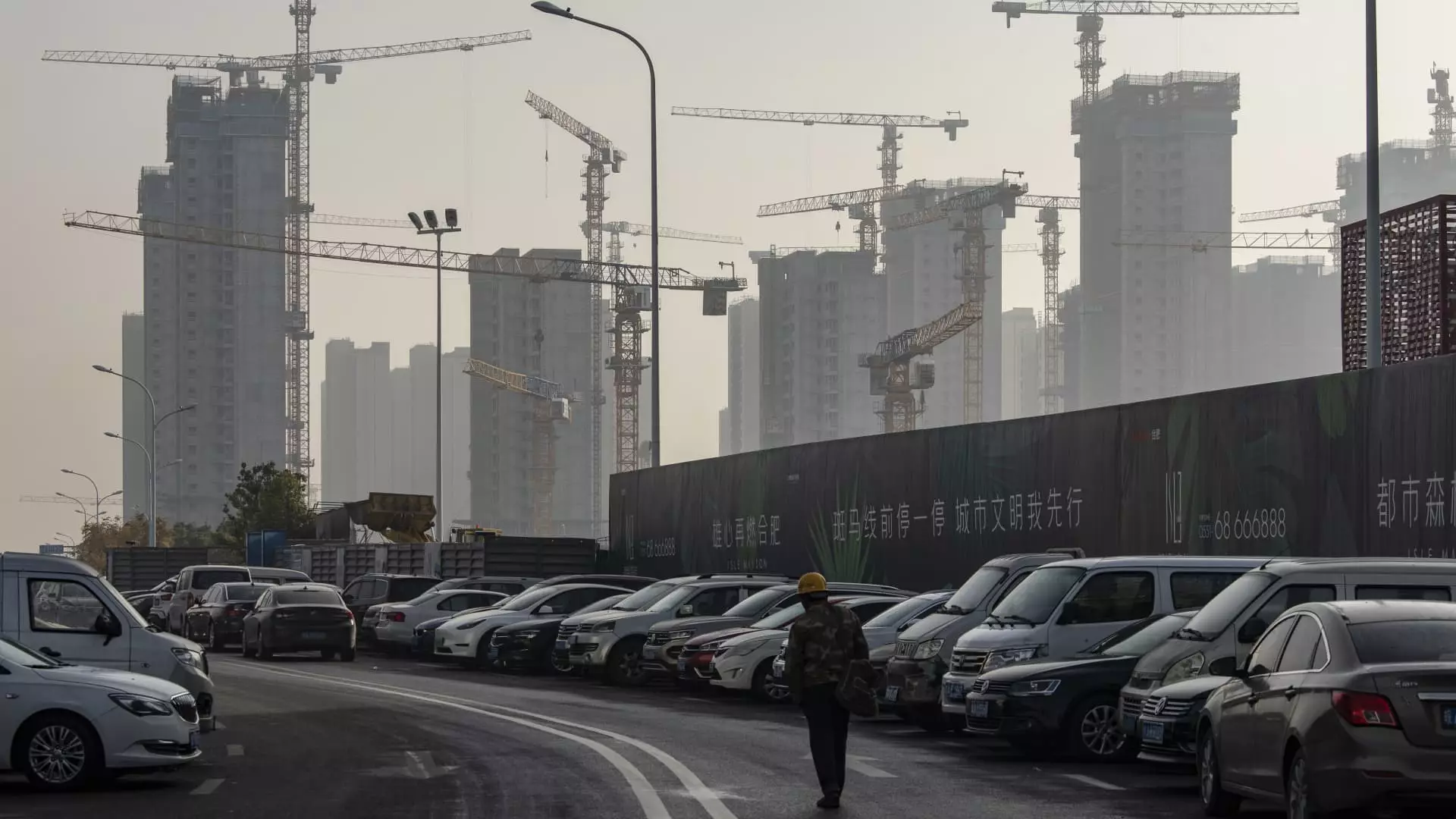The Chinese real estate market, once a formidable engine of growth, is now grappling with significant challenges. A combination of over-leveraged developers, dwindling consumer confidence, and regulatory scrutiny has resulted in a market downturn that analysts and policymakers are struggling to address. Despite recent measures implemented by President Xi Jinping and the Finance Ministry aimed at revitalizing the sector, experts predict that a genuine recovery may still be over a year away. As highlighted by mainstream research firms like Goldman Sachs, S&P Global Ratings, and Morgan Stanley, the timeline for stabilization appears much longer than many stakeholders would hope.
In response to the ongoing crisis, the Chinese government has rolled out a set of stimulus packages aimed at curbing the freefall of property prices. The strategies proposed range from enhancing financing for developers to reducing unsold housing inventories. In an October note, Goldman Sachs underscored the need for a coordinated easing package, emphasizing the urgency and scale of government intervention. They forecast that, without substantial financial support — potentially an additional 8 trillion yuan ($1.12 trillion) — the downturn in the real estate market could persist for several more years.
However, there are clear limitations within these measures. While state intervention can temporarily stem the tide, a much deeper structural overhaul is necessary for sustainable recovery. The housing market’s issues have roots in the unsustainable practices of selling homes before completion, a model that faltered with the government’s crackdown on excessive debt among developers. The fallout has left millions of buyers awaiting delivery of their homes, creating discontent and stiffening market demand.
The immense backlog of unsold inventory looms large over the market. As of late 2023, Nomura estimated that around 20 million pre-sold homes remained unfinished. Despite recent efforts to expedite financial support to developers under various initiatives, including a reported 300 billion yuan loan facility aimed at unsold completed homes, the real impact of these efforts remains limited. Experts from S&P contend that 30% of this unsold inventory may never see a buyer, placing a heavy burden on banks and other financial entities.
Property sales fell by about 4% year-over-year in October 2023 across 22 major cities, a sharp improvement from the more than 25% dive recorded in September. This marginal recovery, however, is not an indicator of a solid rebound but a testament to the ongoing distress in the sector. With expectations of property sales declining to around 9 trillion yuan this year, analysts predict further contractions down to 8 trillion yuan in 2025 — marking a dire situation compared to the 18 trillion yuan in sales achieved just two years earlier.
Consumer confidence forms the bedrock of any real estate market’s health. With developers increasingly struggling to fulfill pre-sold inquiries, potential homebuyers are hesitant to enter the market, fearing that their investments are at risk. A climate characterized by uncertainty and a lack of financial liquidity only amplifies this depreciation in consumer sentiment. The negative spiral of falling demand, leading to further price cuts and driving developers to adopt a more cautious approach regarding land acquisition and new projects, has become evident.
Persistent weak sales results in further stress on developers’ liquidity, serving to perpetuate a vicious cycle. As S&P Global analysts pointed out, construction projects began to dwindle significantly, dropping 42% in 2023 compared to the peak in 2019. This trend is a critical indicator that suggests a prolonged malaise, heightening the stakes for any policy measures moving forward.
Predicting the future of China’s real estate market is an intricate endeavor given the myriad of factors at play. While optimistic projections hint at potential stabilization by late 2025 due to government interventions, the realities suggest that recovery may not be robust nor immediate. Analysts propose that the government must implement stronger, more effective measures targeting developers’ liquidity challenges while also enhancing consumer confidence.
Nevertheless, the overarching goal of prioritizing advanced manufacturing as the primary growth driver indicates a strategic pivot away from real estate, further complicating the recovery narrative. For Chinese policymakers, the challenge lies in striking a delicate balance between stimulating the real estate market and ensuring that their policies align with long-term economic objectives. In the face of such complexities, all stakeholders will need to remain vigilant as the unfolding situation evolves. Only time will tell whether China’s real estate sector can emerge from the fog of uncertainty and regain its status as a key pillar of economic growth.

